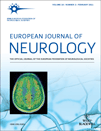Neuropsychiatric symptoms and brain structural alterations in Fabry disease
Abstract
Background: Neuropsychiatric symptoms (NPS), mainly cognitive deficits up to dementia and depressive syndromes have been described repeatedly in Fabry disease (FD). However, examinations regarding the pattern, extent, and frequency of the NPS in FD are still lacking. Moreover, the relationship between NPS and brain structural alterations in FD is unknown. The aim of this study was 1) to characterize NPS in a relatively large cohort of adult subjects with FD, and 2) to explore the association of cognitive performance and depressive syndromes with the FD-typical brain structural findings.
Methods: Twenty-five Fabry patients (age 36.5 ± 11.0) with mild to moderate disease involvement and 20 age, gender-, and education-matched healthy controls were extensively studied by neuropsychiatric assessment, structural magnetic resonance imaging, magnetic resonance angiography, and diffusion-tensor imaging.
Results: Patients with FD showed deficits only in the attention domain. Clinically relevant depressive syndromes were noted in 60% of the patients. The subgroup of patients with markedly elevated volumes of white matter lesions (not associated with actual stroke; n = 7) showed slightly more learning and memory deficits, but no higher depression rate compared to less affected patients.
Conclusions: Against the prevailing assumption, Fabry patients, even those with marked brain structural alterations, showed only mild cognitive deficits. The high frequency of depression in FD is likely to be related to the burden of this chronic multiorganic hereditary disease, but not to the FD-typical brain structural alterations. Longitudinal studies are necessary to clear, if the mild cognitive deficits in FD might precede clinically relevant cognitive decline.




